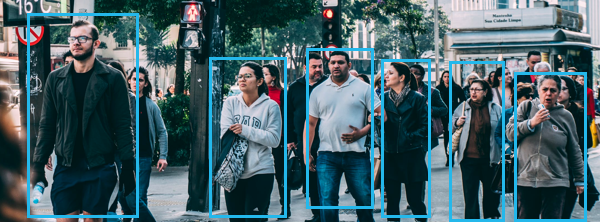Verkada’s First Step into Computer Vision: Announcing People and Vehicle Detection
Our founders launched Verkada with the mission of modernizing and simplifying enterprise video security systems. By combining a hybrid cloud infrastructure that is easy to maintain with software that is constantly evolving, we have been able to solve many of the pain points experienced by IT teams, security professionals and end users alike. Unlocking the potential of computer vision (CV) is the next key step to help organizations strengthen their safety and increase their operational productivity.
Today, my team and I are excited to announce the release of new features, designed to expedite many video monitoring tasks—adding value to video surveillance across multiple industries. This feature release will help make video security something that not only monitors physical spaces, but also provides insights that benefit business decisions.
Features in this release include:
People and Vehicle Counting
People and Vehicle Detection

Why These Features?
We recognized the significant impact that People and Vehicle Detection features could have on a very broad set of organizations. Adding plug-and-play, advanced computer vision functionality to our customer’s cameras has the potential to more effectively and efficiently alert customers about situations of interest.
People and Vehicle Detection enables users to receive notification alerts when motion related to human activity comes into the camera frame. This eliminates many false positives (from non-human activity) and also provides security professionals with actionable information, without requiring active monitoring. Additionally, to help accelerate incident resolution, the new features can identify playback event motion activity that includes cars or people. Over time, the system will collect and analyze visual and non-visual data, such as the level of activity within a space, which can then be used to indicate trends.
For retail and hospitality establishments, the People Counting functionality is especially useful in assessing how to staff properly during peak hours. It can also assist in determining ways to set up a location so that foot traffic flows smoothly. Additionally, the People Detection functionality allows users to quickly monitor restricted locations (like a stockroom after hours) to help prevent theft.
Technical Challenges
Considering that object detection frameworks have reached the point where pre-trained models are accurate enough to provide useful and consistent detections, it seems as though building features on top of an object detection pipeline would be easy. However, when you have to scale out an algorithm that relies on large graphics processing units (GPUs), and also needs to ingest images from thousands of offsite cameras (many of which rely on our low-bandwidth, scalable infrastructure), the challenge becomes significant.
Getting a scalable pipeline in place that could ingest these images enabled us to tackle this critical challenge. First, we designed a server cluster that supports the deployment of GPU-reliant code, and then allows that code to ingest data as it becomes available.
Next, we plugged in a pre-trained computer vision model called YOLOv3 and ingested the thumbnails as they became available. Because it is a real-time object detector, continuously running YOLOv3 on a camera’s streams would take approximately one GPU per camera. This is extraordinarily expensive, so we took advantage of our existing motion measurement functionality. With preprocessing that runs on each camera, we are able to push much of the compute time out to the edge. This reduces the load on the GPUs by approximately an order of magnitude, without missing images with objects of interest.

What’s Next
The engineering team is excited by what this general purpose pipeline will allow us to develop next. This is the first step in a broad set of functionality that allows us to detect, count and manage images with people and vehicles, and make it easier for our users to track objects across cameras. Look for us to launch many more CV-enabled features over the coming months as we explore path analysis, filtering alerts to make them even more actionable, as well as many more.
I want to give a special shout out to the team that made this release a reality: Benjamin Bercovitz, Grace Wang, Preeti Pillai, Jun Uzawa and many others put a lot of hard work into building these features. Utilizing the evolving capabilities of computer vision is the next step in our continuing mission to bring video surveillance into the age of IoT. By providing proactive and actionable information, we all hope that People and Vehicle Detection will help our customers streamline security and efficiency—enabling them to do more with their Verkada systems.
—
To learn more about our latest features and how they can benefit your organization, get a 20-Minute Demo of Verkada.


